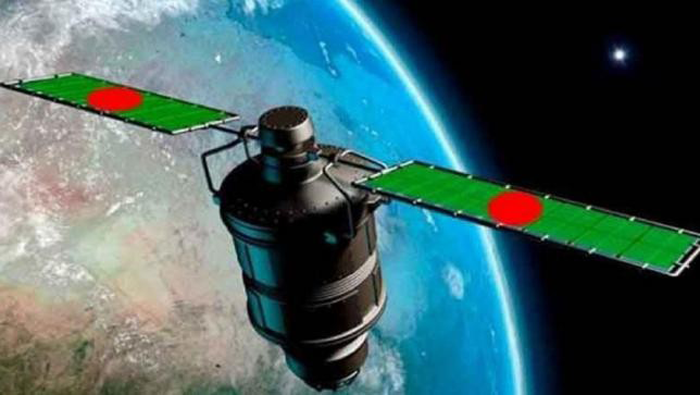A satellite is an artificial object which is intentionally placed into orbit. The Bangabandhu Satellite-1 is the first Bangladeshi geostationary communications and Broadcasting Satellite. It was manufactured by Thales Alenia Space and launched on 11 May 2018 and located at the 119.1 East longitude geostationary slot.
Bangabandhu Satellite was implemented by the Bangladesh Telecommunication Regulatory Commission (BTRC) under the telecommunication ministry. Bangladesh Government formed a Government-owned Bangladesh Communication Satellite Company Limited, BCSCL with the aim to operate the Bangabandhu Satellite-1.
The launch made Bangladesh the 57th nation in the world and fourth in South Asia after India, Pakistan, and Sri Lanka to own a satellite. Bangabandhu-1 satellite carries a total of 40 transponders (26 KU-band and 14 C-band transponders) with a capacity of 1600 MHz. In the outer section of the satellite, the red-green flag of Bangladesh is painted and on the flag, there is written “Bangabandhu-1” in English and Bangla. There is also a monogram of the government of Bangladesh.
আরও নতুন কোন কন্টেন্ট পেতে চান? আপনার প্রয়োজনীয় কন্টেন্টের চাহিদা আমাদের কাছে সাবমিট করুন:
The Bangabandhu-1 satellite weighs 3,500. In BS-1 The priority satellite applications are (1) Direct to Home (DTH) (2) VSAT (3) Backhaul and Trucking (4) Network Restoration (5) Disaster Preparedness and relief. For these sectors, Bangladesh was dependent on foreign satellites. Which costs us around 14M per year. Now, by the use of the Bangabandhu Satellite, we will be able to avoid this huge amount. Moreover, we will be able to earn a sufficient amount of foreign currency by renting some transponders to other countries.
The Primary Service Area (PSA): Once launched, Bangabandhu-1 will save this annual cost, and bring in foreign currency by leasing out half its capacity to SAARC nations, as well as countries like Indonesia, the Philippines, Turkmenistan, Kyrgyzstan, and Tajikistan if the frequencies are properly coordinated. The telecom regulator hopes to break even in seven years. The satellite will narrow the digital divide, as it will help take broadcast and telecom services to rural areas and allow the launch of some lucrative ventures like direct-to-home services throughout the country. The mission of the Bangabandhu Satellite is expected to last at least 15 years. So, we can say that Bangabandhu-1, will be helpful for the people throughout the country.
